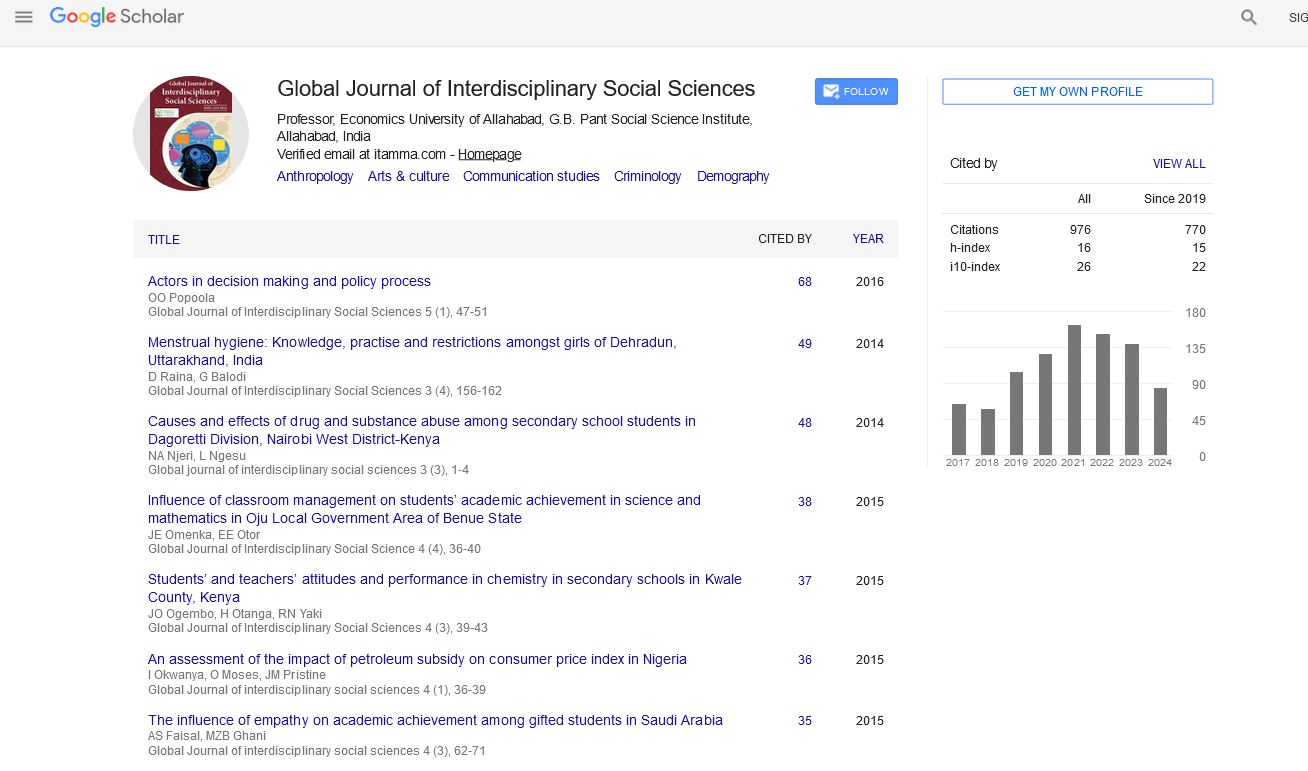Indexed In
- JournalTOCs
- Google Scholar
Useful Links
Share This Page
Journal Flyer

Open Access Journals
- Agri and Aquaculture
- Biochemistry
- Bioinformatics & Systems Biology
- Business & Management
- Chemistry
- Clinical Sciences
- Engineering
- Food & Nutrition
- General Science
- Genetics & Molecular Biology
- Immunology & Microbiology
- Medical Sciences
- Neuroscience & Psychology
- Nursing & Health Care
- Pharmaceutical Sciences
Perspective - (2022) Volume 11, Issue 3
An Integrated Review of River Channel Formation
Rean Buck*Received: 02-May-2022, Manuscript No. GJISS-22-17106; Editor assigned: 04-May-2022, Pre QC No. GJISS-22-17106(PQ); Reviewed: 20-May-2022, QC No. GJISS-22-17106; Revised: 27-May-2022, Manuscript No. GJISS-22-17106(R); Published: 03-Jun-2022, DOI: 10.35248/2319-8834.22.11.021
Description
Water on the planet Earth (in the oceans, on the continents and in the atmosphere) appeared during the time of the Archean epoch. According to the maximum widespread standpoint, the Earth’s hydrosphere appeared due to gravity differentiation and degassing of the mantle substance. Due to water bonding on the Earth’s surface and its burying in sedimentary deposits, this method was characterized through a gradual slowing. At the beginning of the Paleozoic (570 million years), the hydrosphere volume comprised more than 90% of its current value. Many geological facts confirm that 1.5-2 billion years, the average ocean depth comprised 2-3 km; the present depths have been achieved not later than in the late Pre-Cambrian (1.6 billion years). It is however, not excluded that as early because the end of the Cretaceous (100-70 million years), there was land in place of the existing oceanic basins or more probably, shallow epicontinental seas.
The formation of land hydrography in the past and especially, generation and evolution of the river systems became predominantly determined by the occurrence and improvement of the continents due to tectonic-magmatic strategies. It is associated with the formation of the Earth’s hydrosphere in the procedure of juvenile water coming to the Earth’s surface as well as to the development of the methods of water exchange and soil-ground erosion under the action of incoming solar radiation to the Earth’s surface.
The significant water volumes in some beyond epochs had been focused in addition to the oceans and the glacial sheets, in significant sea basins, lakes and swamps, in the water-bearing layers and at the continents. In addition to drain and drainless lakes of the current type, the Earth’s history knows vast lakes of lagoon type and inland seas, in which the connection with the ocean became periodically interrupted or made difficult as a result of tectonic motions and significant ocean level changes. Such lakes-seas that occupied in some epochs tens of millions of square kilometers of the location were not only the massive accumulators of sea salts but also powerful moisture evaporators.
Leaving the mountains, the rivers deposit their sediments and thus increase their beds. Accumulations of sediments take place particularly in the channel and in the parts of flood plain adjoining it. In the course of time this area of the ground surface dominates other parts of the flood plain and the river flows between the banks made by it. Meanwhile the river breaks through these banks and flows down into the lower area of the valley where it forms a new channel, which begins to rise etc. Thus by breaking from time to time into the lower elevations of a valley and accumulating sediments there, the river regularly raises the elevation of the flood plain.
Conclusion
This process continues for hundreds of years, until the supply of sediments corresponds to the transport capacity of the river. There are comparatively few direct data on the development of the river network on the Earth’s continents in the geological past. That is why the corresponding estimates for the individual epochs in the past, especially for the Pleistocene, were obtained from paleoclimatic reconstructions. The majority of such estimates were obtained for Eurasia.
Citation: Buck R (2022) An Integrated Review of River Channel Formation. Global J Interdiscipl Soc Sci. 11:021.
Copyright: © 2022 Buck R. This is an open-access article distributed under the terms of the Creative Commons Attribution License, which permits unrestricted use, distribution, and reproduction in any medium, provided the original author and source are credited.

